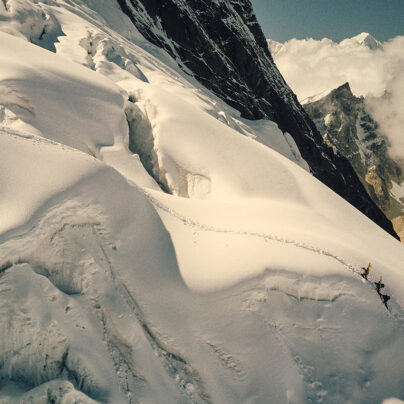Between Heaven And Hell
Kyle Obermann
‘We anticipate only a hope unseen, casting long glances towards a cold, ink dark east. We are surprised once more when it finally begins again. Sunrise. A reminder that faith, persistence rather, was and always is, worth it.’
I closed my pen, my journal, and then my eyes.
Thousands of wind-born needles screamed across the sky, raking my face as the wind buffeted from east to west. Rain. I grimaced, retreating further inside my hood. Below, an 80˚ slope of rock and razor scree cascaded 1,000m into the abyss. Behind, we had risen 800m through wet scree, rainfall, and waterfalls to reach ‘the Notch.’ It was the lowest point in this shale spine, 5,290m. Black mist continued to boil up over the peaks. The sound of rockfall cracked through the mountain fog like thunder.
‘Admittedly, I’ve never done anything this difficult.’ I cowered backwards, looking at Phillip. He had just reached the Notch moments before, bearing the same painful grimace frozen into his face by the elements as I did. He managed a begrudging smile.
I looked left. Knife-edge crags dimly wavered back and forth into visibility, mist-blackened precipices plummeted into the abyss under them. Impossible. To the right, the ridge undulated upwards, casting off pieces of crumbling rock towards the glacier and rising towards a 5400 meter shale spear glowering above us. The peak. It seemed the more possible of the two. We had little choice.
Five days before, in the formerly earthquake-ruined town of Yushu, we were poring over satellite maps showing where the Tibetan Plateau twists south to become the Hengduan Mountains that divide east and west China.
‘None of these passes have ever been crossed before. All of them are probably higher than either of us has ever climbed. But we have to make every one of them. Or else…’
Phillip nodded silently in agreement. We both had an impending sense of the impossibility of what we were about to undertake.
I looked left. Knife-edge crags dimly wavered back and forth into visibility, mist-blackened precipices plummeted into the abyss under them. Impossible. To the right, the ridge undulated upwards, casting off pieces of crumbling rock towards the glacier.
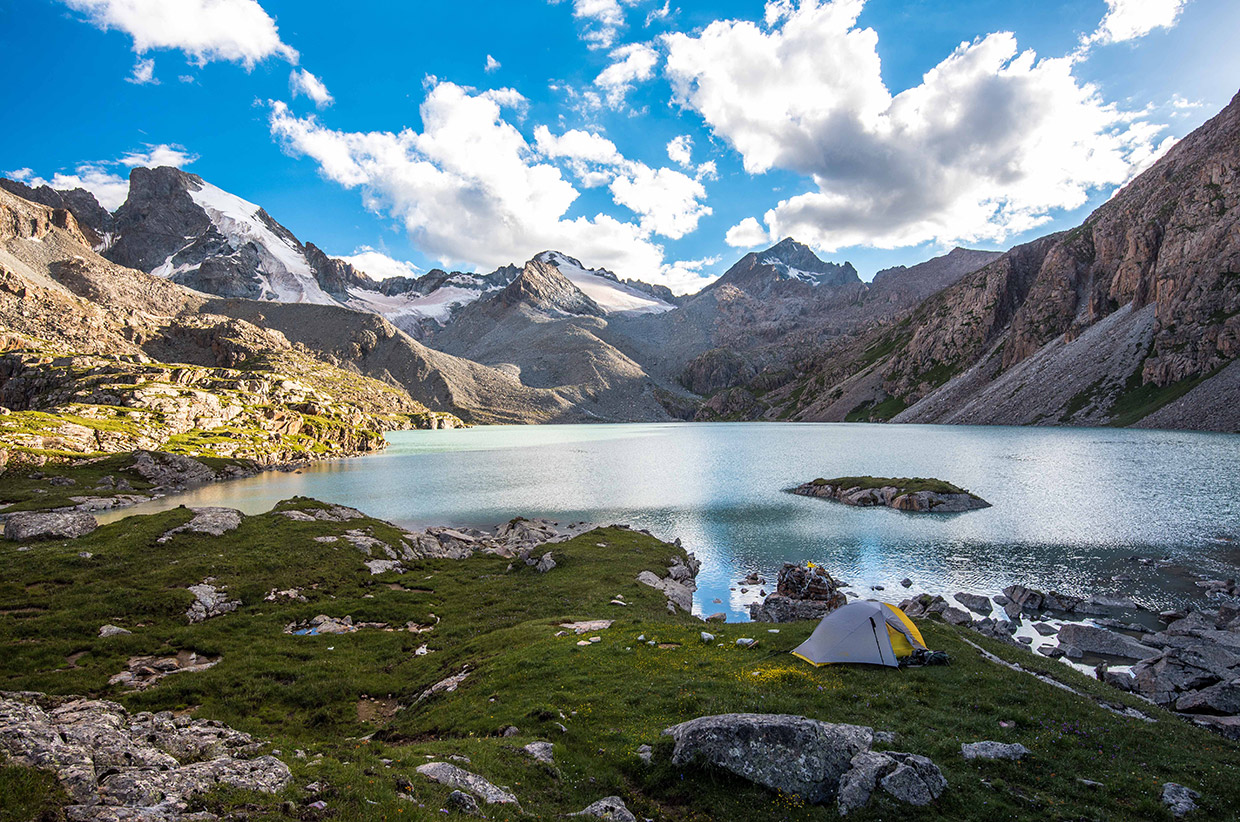

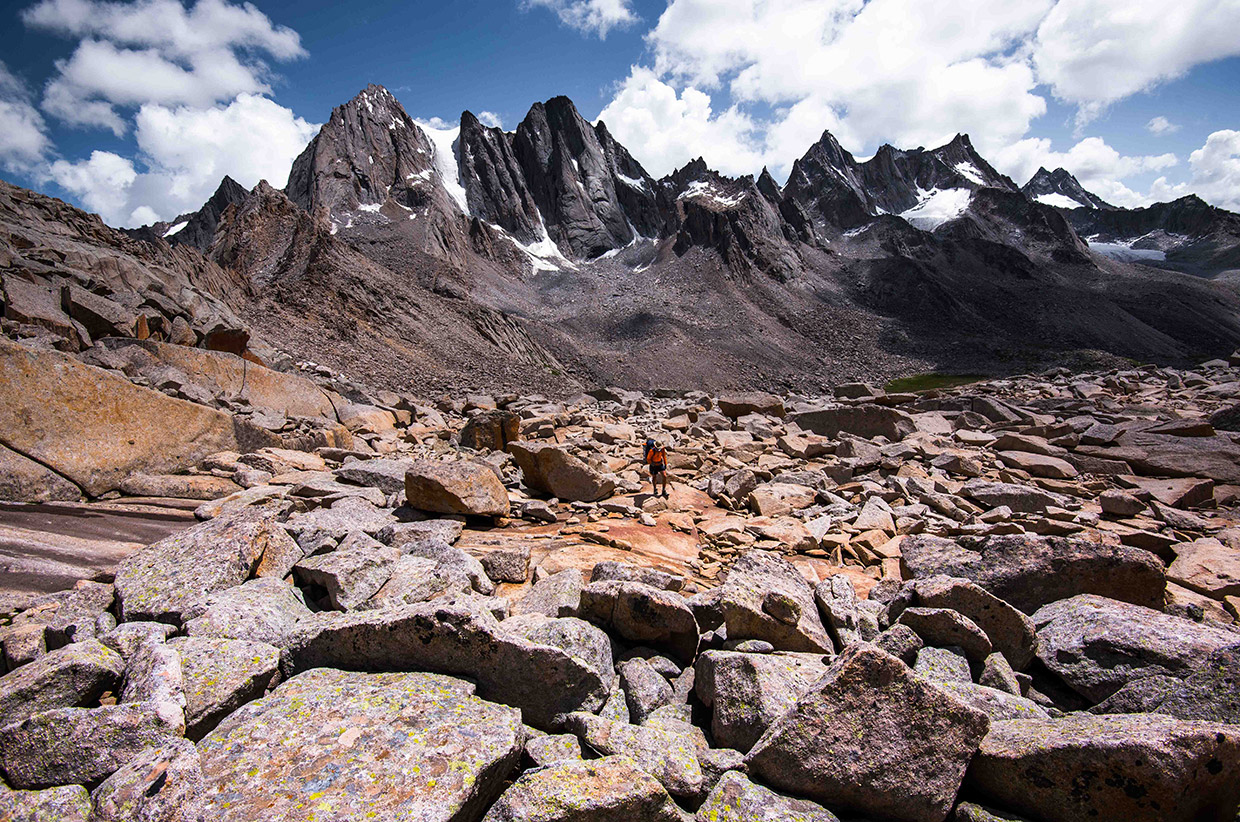
A thinly drawn red line on the map marked the proposed historical route for the first kora – the Tibetan practice of circumambulating holy peaks and places in a clockwise direction – of the highest chain of peaks near Yushu. At the centre of the chain is Ganggeqiaji Holy Mountain, a little-known and glacier-decorated dagger thrusting more than 2,000m over Yushu and the Tibetan Plains of Batang. Despite its prominence in elevation and local worship, Ganggeqiaji shows up on no maps. Its obscurity and 5,752m of elevation contributed to our headaches.
This is gonna be a tough one, I thought to myself, rubbing my right ankle to see if the swelling had gone down from my bad sprain last month. I frowned, trying to suppress the doubt building in my mind. We had the gut for it – or the insanity – I reasoned, and that’s at least half the battle.
I glanced one last time at the red line and a shadowy thought darted across my mind. Were these peaks revered for their generosity to humans who walk below, or the very opposite?
In minutes, we lost all traction and under a constant downpour the earth below our feet began to slide. The descent became a treacherous plummet to the depths of our nerves. But, just as the weather threatened to overthrow us, adrenaline cleared our minds, demanding every cell fixate on the task at hand.
With dread, I raised my gaze towards the eerie pinnacle of crumbling granite hundreds of meters above. It resembled a sorceress’s hat ominously clawing its way into the sky. The Witch’s Spire I thought. It marked the crest of our first pass. In between lay a perilously unstable slope of boulders thinly glued together by melting ice.
‘Let’s take the glacier.’
I shuddered at the thought of having to navigate more boulders. To the left, a long delta of dirt-dusted ice swept down from above us. We had been scrambling over these forlorn rocks for the first four hours. The metallic bell of hiking pole against lichen-crusted granite ricocheted amongst the mountains. ‘Let’s go, we can’t have the weather turn on us up here. The surface of these rocks will become as slippery as ice.’
It was only 10.00am, but I saw exhaustion on Phillip’s face and he probably saw the same on mine. And that’s exactly when it happened.
As we crossed over the 5,230m Witch’s Spire the storm came. In minutes, we lost all traction and under a constant downpour the earth below our feet began to slide. The descent became a treacherous plummet to the depths of our nerves. But, just as the weather threatened to overthrow us, adrenaline cleared our minds, demanding every cell fixate on the task at hand. Each step required absolute focus and stability. There was no shelter; we had little choice. The thunder rumbled ahead as we continued downward.
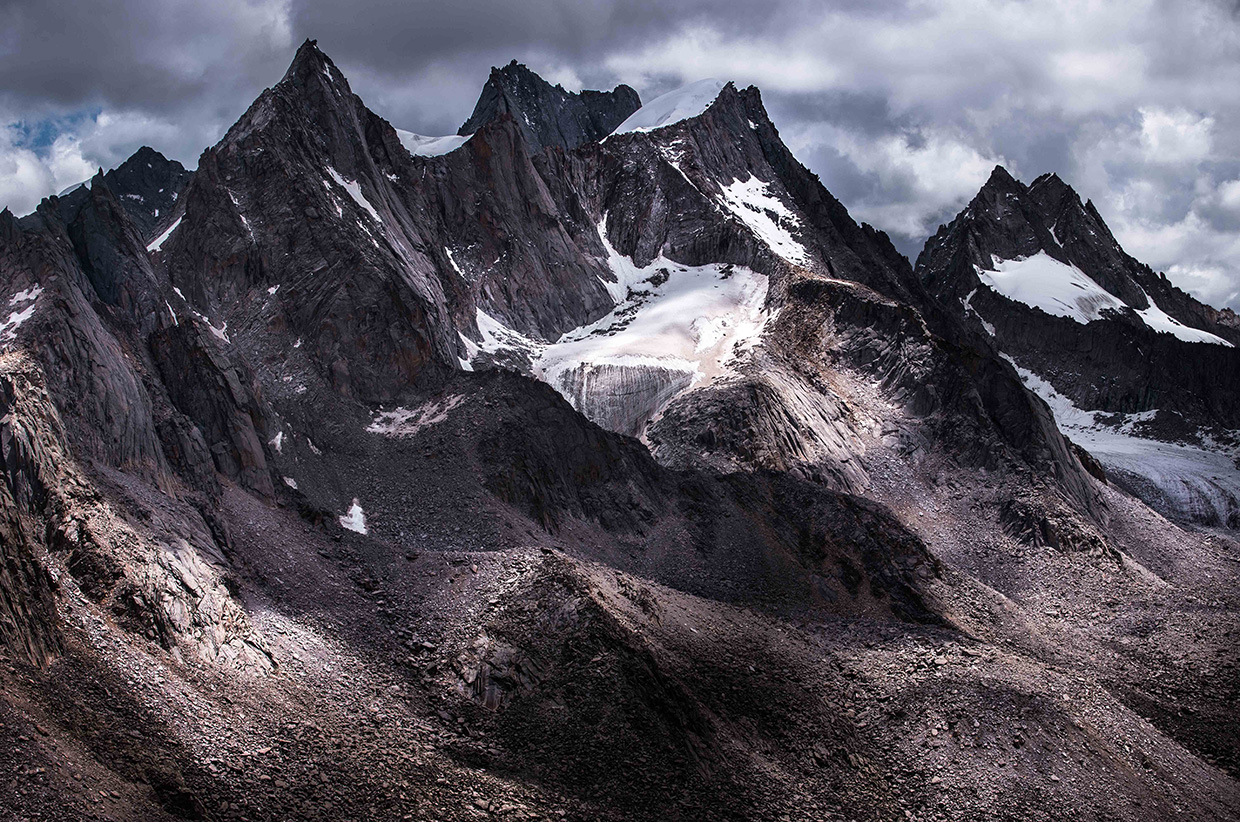
I looked back towards the spire, which glowered down on us from under ever-darker skies. The mountains were beginning to show their true face. We crossed the second 5,000m pass that gazed bleakly at us across the valley, and finally, under the barren south face of Ganggeqiaji, crashed into camp just as echoes of thunder sent sheets of hail down from the heavens once more.
Between heaven and hell. I dimly smiled to myself, remembering the mirror-blue lake camp and clear weather the day before. Where had that luck gone? Sleep began to pull away at the weariness in my limbs. The dark covers of dreams pulled me under.
A herd of blue sheep scattered across the face and two white-lipped deer bolted across the marshy flatlands below. ‘Snow leopard!’ I shouted.
‘Where? Take a picture!’ Phillip yelled in automatic response. I fumbled to open my camera case. When I looked back up, it was gone. The only visible movement on the cliff was the herd of blue sheep still darting upwards.
We were now deep in snow leopard territory, near its preferred summer height of 5,000m, and something had scared the herd of blue sheep – its favorite prey – to furiously scatter. But I had not seen enough of that long, jumping body to know for sure. Was it really a ‘sa’, as the snow leopard is called by the Tibetans, or merely the mountains playing more wicked tricks on us?
I scanned the landscape above. The blue sheep were now easily up and over the towering rock wall before us. Blue Sheep Pass, I mused. The pass seemed even taller and steeper than the two the previous day. It was also far more remote. We were utterly alone.
No way back, only forward, I repeated. We once more entered the labyrinth of treacherous rock heading up the spine of the ridge. This time the stones were larger and the ascent steeper than the Witch’s Spire. Each gap between shifting boulders seemed bottomless. Above, the granite teeth of Ganggeqiaji leered down at us like the many-headed guardian of hell, Cerberus, tempting us to back down with each step upward. The GPS hit 5,000m, 5,100m, 5,200m, and kept climbing.
So did we. Compelled to defy the slithering rock slope that threatened to swallow us with one false step, our senses focused once more on each perilously stacked granite-blocked problem ahead. We ascended at a pace so cautious we breathed the dwindling air as if at sea level. We stole our audacious passage across Ganggeqiaji’s south face, the beast continued to sleep, and not until we reached the top of the pass did I dare to yell.
Relief. Once again, we had made a first crossing in this range. With each step we were closer towards our goal and more impossibly cut off from turning back. Bearing these thoughts quietly in mind we celebrated, sharing a piece of smoked pork sausage Phillip had brought from halfway around the world, and began to descend the perilously shifting blanket of rock falling off the other side.
Compelled to defy the slithering rock slope that threatened to swallow us with one false step, our senses focused once more on each perilously stacked granite-blocked problem ahead. We ascended at a pace so cautious we breathed the dwindling air as if at sea level.
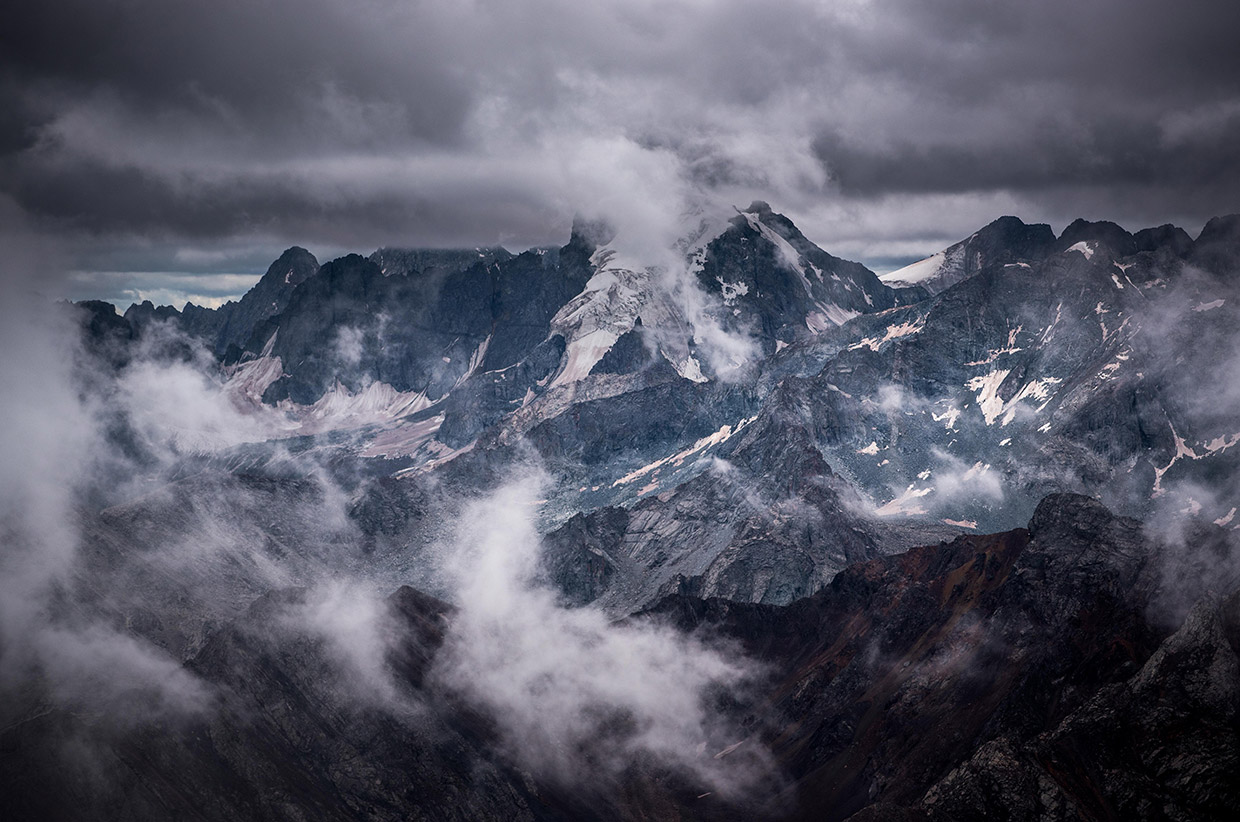
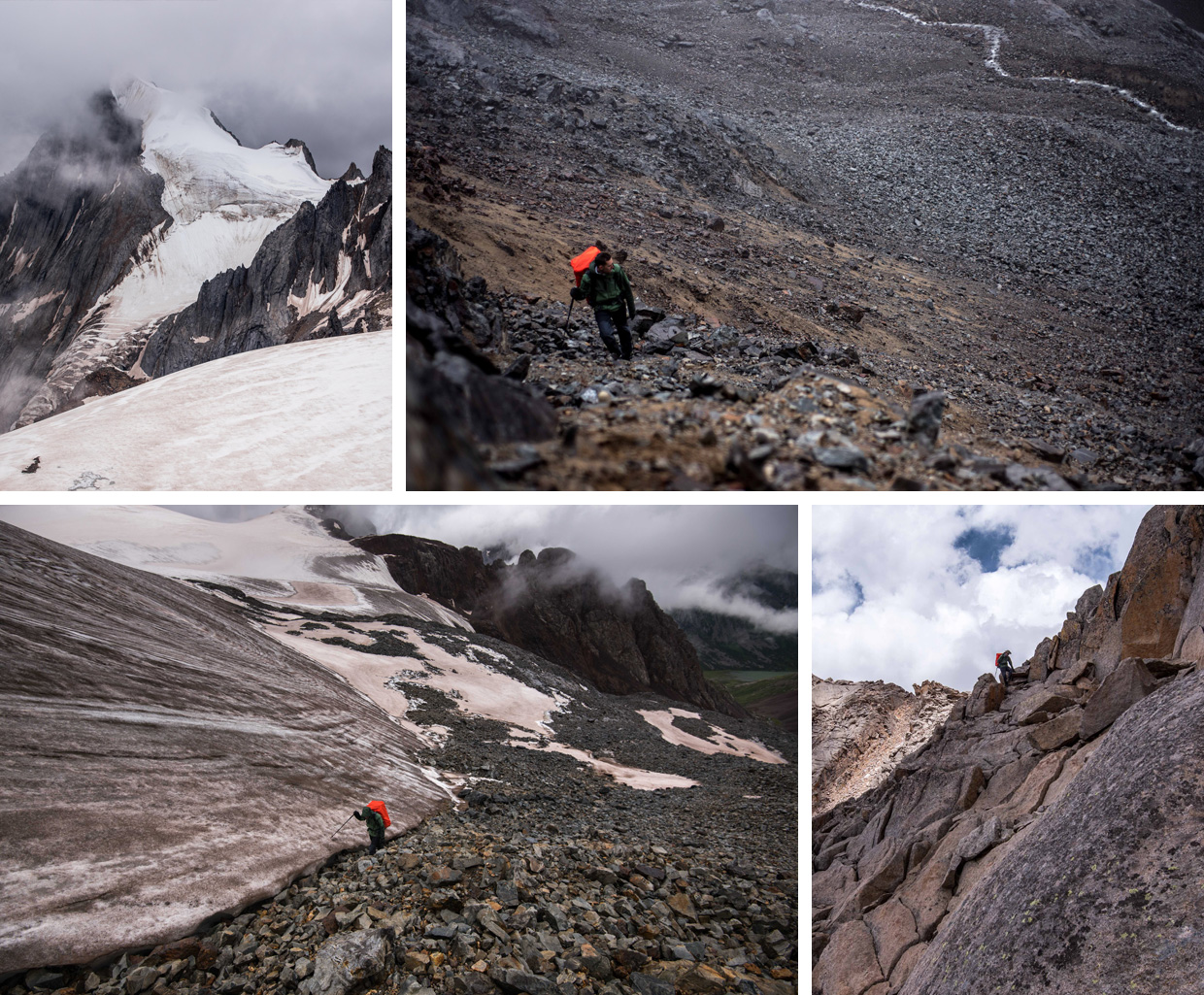
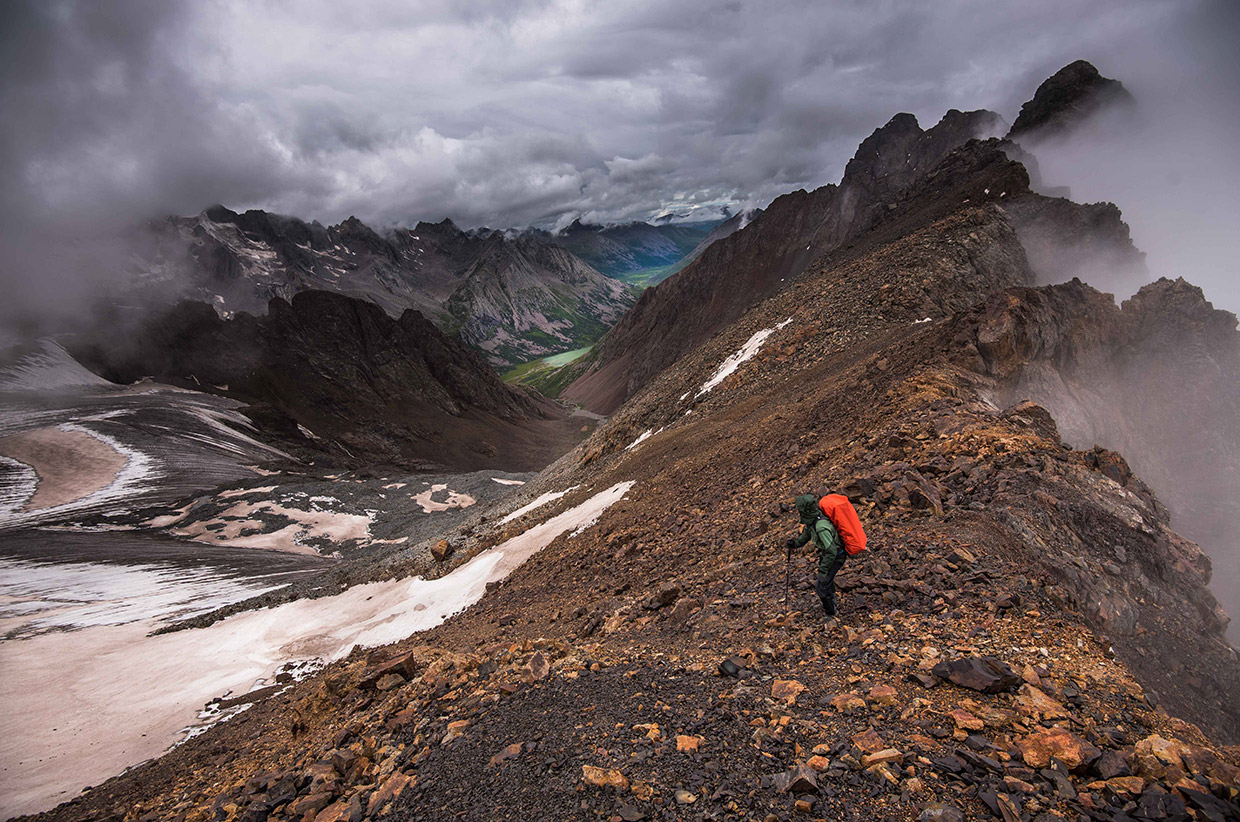
Regarding this holy peak, the locals had told us not to shout to others across the valleys, not to wash blood into rivers, and not to take rocks from the slopes. There were stories of those who broke these rules contracting strange illnesses. Above all, they would not attempt to approach too near the summit. Nor would we.
But, on the fifth day, as we stood on the Notch with fog boiling around us and precipices beneath, we had little choice but to climb towards the peak above us. It was not the main peak, but it was close. And Ganggeqiaji had awoken.
The sky descended and wrapped us in a swirling cloak of thunder, snow, fog, hail and wind. It sent every piece of weather it could muster, the heavens seemingly hell-bent on stopping us on this final stage of the kora.
Still, slowly, we persisted. We reached the peak above the Notch wrapped in fog. My watch read 5,421m. It was the highest I had ever stood in my life. Thankfully, the rain and hail had dissipated.
But it didn’t matter.
With no visibility, we had no chance of descending the other side of the shale spear we had just climbed to complete the kora. No sight, no descent. The mountains had resisted our advance at each step. Each climb proved more stunning and yet wildly improbable than the one before. And this was the last. Trapped between indecision to return and an uncertain deadly ascent in tumultuous weather from an exposed spire wrapped in the clouds, I had to admit – we were stuck.
Were these peaks revered for their generosity to humans who walk below, or the very opposite? The thought once again dashed through my mind, borne on the fog whistling around us. I listened to my heart beat wildly from my chest and up through my ears. My breathing was ragged, the air barely filling my lungs.
The Tibetans took these peaks for granted; not their value, but rather their holy status and mystery was already a given. The mountains’ demand for respect and worship was an invariable as obvious as the white glaciers they birthed and dwindling atmosphere they pierced.
Tibetans show their respect for mountains by staying below them. But we showed our respect for the mountains by entering them. How? We tend to think we are stronger than the mountains – until we begin to climb. The Tibetans don’t mess with this game of pride. But we from the lowlands must. We did not kora Ganggeqiaji for auspicious merit but to be taught our place. The mountain proved a generous teacher.
Our place was not above nature, nor below it, but deeply in it.
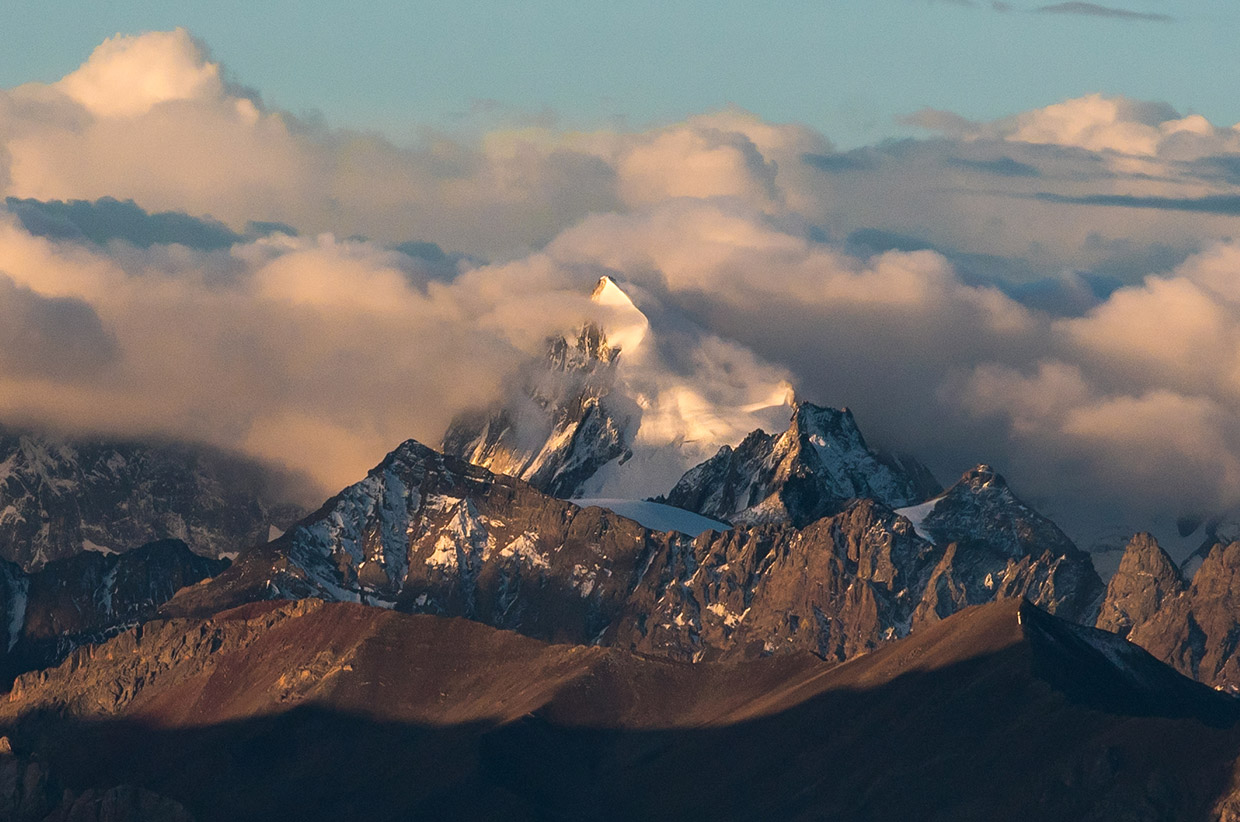
The wind stilled around us. We were here – we were supposed to be here – and I was glad to be alive despite it. Thousands of miles from home, we had arrived at this elevation not as trespassing foreigners but merely as part of the wild responding to its call. It resonated in the cold, uncaring air around us. The first ascent of this nameless peak was nothing to be arrogant about. It is foolish to think you have conquered nature by using the very call and gifts that nature has given you. You can only take part in it.
Tibetans take the mountains as literal holy figures, and standing 5,400m up in the heavens it was tempting to feel the same. Still, as I reflected on the last five days I couldn’t help but think of these mountains as a metaphor for a power even beyond themselves.
‘Mortal man… walk humbly in the company of your God.’ It was an old passage from the Bible I had once learned. Our gods were different, but I had never been more aware of my own mortality and the compelling force of humility than I felt then, before that mountain. What we took from this place was different than the Tibetans. Nevertheless, Ganggeqiaji had something to teach us all.
The wind changed. I looked to my right where Phillip was staring off hopelessly into the abyss. We had fought our way here with every cell in our bodies. Defeat now hung low over us. Was faith, persistence rather, worth it? It was perhaps no miracle, but there was one more lesson yet to be learned.
The fog wavered, bouncing backwards into thin clouds dancing amidst drafts. The knife of Ganggeqiaji’s white peak cut itself out between the grey wall. The pearl-white glacier below unveiled itself like an ancient, blanketing ocean. Slightly to the right, only metres wide at its opening, a fine scree chute broke away from the cliffs and sunk to the very bottom of the next valley.
It was a successful first kora of one of China’s most remote peaks. It had been hell, but – was it luck, was it God, was it the dark, stone-faced mountain? – surely, we had never been closer to heaven.
Kyle Obermann is an environmental explorer based in Western China. He is currently spending one year inside China’s remote Hengduan Mountains. Ganggeqiaji lies at the northernmost edge of the range, and has never before been named in an English-language publication.
Website: kyleobermannphotography.com
Instagram: @kyleobermann




